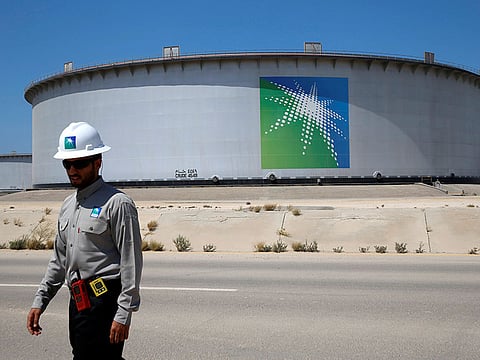Oil climbs after Saudi Arabia suspends shipments through Red Sea lane
Move comes after attack on two big oil tankers by Houthi rebels

Tokyo: Brent crude led oil prices higher, extending gains into a third day after Saudi Arabia suspended crude shipments through a strategic Red Sea shipping lane and as data showed US inventories fell to a 3-1/2 year low.
Brent crude futures had risen 47 cents, or 0.6 per cent, to $74.40 a barrel by 0247 GMT, after gaining 0.7 percent on Wednesday.
US West Texas Intermediate crude futures were up 5 cents at $69.35 a barrel, after climbing more than 1 percent in the previous session.
An estimated 4.8 million barrels per day of crude oil and refined petroleum products flowed through this waterway in 2016 toward Europe, the United States and Asia, according to the U.S. Energy Information Administration.
"The announcement this morning that the Saudis have closed some shipping lanes in the Gulf because of rebel Houthi attacks also gives the bulls something to launch off," said Greg McKenna, chief market strategist at AxiTrader, also pointing to the drop in US inventories.
Saudi Arabia, the world's biggest oil exporter, said on Thursday that it was "temporarily halting" all oil shipments through the strategic Red Sea shipping lane of Bab Al Mandeb after an attack on two big oil tankers by Yemen's Iran-backed Houthi rebels.
Saudi Energy Minister Khalid Al Falih said in a statement that the Houthis had attacked two Saudi Very Large Crude Carriers in the Red Sea on Wednesday morning, one of which sustained minimal damage.
"Saudi Arabia is temporarily halting all oil shipments through Bab Al Mandeb Strait immediately until the situation becomes clearer and the maritime transit through Bab Al Mandeb is safe," the minister said.
Bab Al Mandeb Strait, off the coast of Yemen, Djibouti, and Eritrea, connects the Red Sea with the Arabian Sea and is one of the world's key shipping lanes for crude oil and other petroleum products. The strait allows for crude exports into the European market via either the Sumed pipeline that links the Red Sea with the Mediterranean through Egypt or the Suez Canal.
Most exports from the Gulf that transit the Suez Canal and the SUMED Pipeline also pass through Bab Al Mandeb strait.
The Bab Al Mandeb strait, where the Red Sea meets the Gulf of Aden in the Arabian Sea, is only 20 km (12 miles) wide, making hundreds of ships potentially an easy target.
A full closure of the strait would force tankers sailing from Saudi Arabia, Kuwait, Iraq, the United Arab Emirates "around the southern tip of Africa, which would add to transit time and cost," according to the U.S. Energy Information Administration.
The EIA estimates that in 2016 - the last year with reliable data - 4.8 million barrels a day of crude and petroleum products flew through the strait, with about 2.8 million going northbound toward Europe, and another 2 million going from Europe into the Middle East and Asia. The strait is an important route for European refined oil products to reach global markets.
While important for global oil flows, Bab El Mandeb is significantly less crucial that the more famous Strait of Hormuz offshore Iran, which in 2016 saw the shipment of 18.5 million barrels a day, according to the EIA. Iran's revolutionary guard has threatened to halt shipments via Hormuz in response to U.S. sanctions.
Sign up for the Daily Briefing
Get the latest news and updates straight to your inbox


